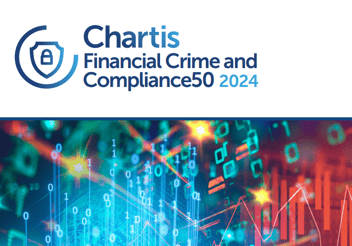From the 12th to the 16th of February, the FinTech world comes together at the Stockholm FinTech Week. The event provides a perfect opportunity to discuss the challenges of FinCrime financial crime in the Fintech community. According to Juniper Research, the specter of FinCrime is predicted to cause around $343 billion by 2027 for payment fraud losses alone. The regulatory burdens are legendary; the shifting goalposts of FinTech regulation are causing headaches in the industry.
However, FinTech companies must manage financial crime to optimize their position in a competitive market. One FinTech challenge is adhering to the stringent regulations and laws that attempt to mitigate financial crime.
Challenges in FinCrime for the FinTech
FinTech has hit the ground running, taking on significant incumbents in the financial sector and winning. But with success comes challenges. The FinTech sector has built these successes upon agility, speed, and usability. Unfortunately, these same avenues have been exploited by cybercriminals intent on leveraging FinTech technical achievements. Automation, cross-border transactions, and instant payments all add to exploitable channels used to launder money and generally exploit the financial system. This exploitation leads to massive financial costs and financial system instability. The IMF has described the situation as “money laundering poses a risk to financial sector stability.”
However, FinTechs are not necessarily standalone entities. Many FinTech firms are intrinsic parts of the financial intermediation chain. Some may use or provide services to banks, delivering innovation that may otherwise stall at the slower pace of a large financial player. The interconnected web of services across the financial system makes compliance with regulations such as anti-money laundering and KYC/CDD (Know Your Customer/Customer Due Diligence) challenging. The resulting avenues of financial crime are broad. Fintech firms must navigate these avenues to tackle a multitude of exploitation types and stay within the bounds of regulatory compliance:
Fraud and identity theft
Identity is an intrinsic part of the flow of money and, as such, offers an ideal initial exploit point for financial criminals. KYC/CDD processes can be burdensome for customers and FinTechs alike. Extensive KYC processes that mitigate fraud can impact the customer experience of onboarding and put FinTech uptake at risk. Adding to this complexity is the emergence of GenAI-enabled KYC fraud. The proliferation of cheap and freely available fake IDs from websites that provide deep-fake digital replicas of document IDs, such as driver’s licenses, puts the digital KYC process at risk.
Money laundering and terrorist financing (ML/TF)
Money laundering uses a complex web of activities to hide the movement and source of money. The fast, cross-border transactions that FinTechs handle so well are an ideal exploitation path for money laundering and terrorist financing. While ML/TF may result in different outcomes, they exploit any organization that employs lower levels of identity, watchlist screening, and transaction checks.
Cybercrime and data breaches
Successful FinTech’s become a target for financial cybercriminals. Revolut is a case in point. FinTech suffered a series of cyber-attacks, including a data breach that affected 50,000 customers worldwide and the exploitation of a software flaw that led to the theft of $23 million.
Regulations provide frameworks to help mitigate the threats of FinCrime on a FinTech. However, the regulatory landscape can be complicated for innovative FinTech firms that work across borders and fit into a complex, interconnected web of financial services.
The regulatory landscape and the Fintech
To command a view of the global FinTech regulatory landscape, the WorldBank keeps track of it. The database shows how many countries have adopted various FinTech regulations. The database covers six areas: data protection, electronic money, anti-money laundering (AML), cybersecurity, digital ID, and Open Banking. AML has the highest adoption rate, with 194 countries having some form of anti-money laundering regulation.
Source: WorldBank
FinTech firms, by their nature, often have global, cross-border reach. This places them in a unique position of adhering to regulations from the jurisdictions of the many borders they transact across. Additionally, many countries now have specific regulations targeting FinTech companies, covering areas such as e-Money, Cryptocurrency, and Digital Banking. Compounding the situation is the fast pace of FinTech innovation; this often confounds the best efforts of regulators to provide frameworks for controlling financial crime. But a FinTech must make its best efforts to prevent identity fraud, money laundering, and terrorist financing for the sake of its own business, its customers, and its relationship with the broader financial community. Fortunately, while technologies like GenAI have advanced into the heart of ML/TF and fake ID, the anti-financial crime industry has responded by fighting fire with fire.
Financial crime solutions for the FinTech
FinTech solutions are based on the latest innovations in technology. However, the fast-paced environment of the FinTech community means that regulations struggle to keep up with the threats of new financial delivery and inclusion methods. The situation requires a flexible approach that can modify a response according to changes in the financial threat landscape. Artificial Intelligence, Machine Learning, and behavioral analysis provide a backbone of capability that is applied across the target areas within the FinTech arena. Notable technological advances are tackling financial crime in the following parts of the system:
Digital identity and customer onboarding: Digital onboarding processes that rely on actions such as presenting a document ID are at risk from GenAI fake IDs. Enhanced KYC/CDD is essential to FinTech FinCrime prevention in the deep fake era. Dynamic KYC/CDD platforms provide continuous risk-scoring to assess a customer risk level. These enhanced KYC/CDD platforms typically integrate with watch lists and provide real-time screening.
Transaction monitoring: Payment fraud losses more than doubled between 2020 and 2023. This is attributed to the increase in e-commerce during and after the Covid-19 pandemic. FinTechs have paved the way for these seamless electronic transactions. However, faster digital payments must be continuously monitored to detect and flag suspicious activity. AI-enabled transaction monitoring provides automated real-time monitoring that can handle vast volumes of transactions. Advanced anti-fraud platforms use machine learning to identify patterns and predict trends as they occur. The instant alerts they generate can then be processed using a dedicated case manager console which can enhance their financial crime detection rates, and avoid hefty losses and regulatory fines
ISO20022, cross-border and faster payments: According to the Bank of England, cross-border payments are expected to grow to $250 trillion by 2027. One of the areas the bank recommends in alleviating the risk associated with cross-border payments is the standardization of messaging. The adoption of ISO20022, a standard for classifying financial data content, provides a framework to help Fintech with regulatory compliance adherence. Using a standard messaging format is essential when handling large data volumes at speed. ISO20022 will enable the sophisticated anti-financial crime checks needed by FinTech firms.
The Holistic FinTech
FinTech firms have one thing in common, they innovate. The connectivity inherent in FinTech solutions is also how it can protect its products, customers, and its broader financial intermediation chain. FinTechs must adopt a “Connect and Comply” approach, based on the concept of FRAML (integrating AML and fraud prevention). Since FinTechs are facing increasing regulatory scrutiny, requiring robust KYC, AML, and CTF measures, the traditional approach of employing disparate point solutions for each compliance aspect is no longer sufficient. FinTechs need comprehensive solutions that address the interconnected nature of FinCrime. By consolidating KYC, AML, and CTF screening into a single platform, Fintechs can achieve greater efficiency, accuracy, and regulatory compliance.
FinCrime will continue to exploit the gaps in the financial chain, taking full advantage of the innovation afforded by Fintech agility. Thankfully, the technology solutions to financial crime challenges can now leverage automation and artificial intelligence. These intelligent technologies have the gift of foresight. AI-powered anti-financial crime solutions can handle even vast volumes of transactions across complex cross-border networks. FinTech firms are ideally positioned to understand and integrate this next generation of financial crime-fighting tools.
Check out the program of talks and events at the Stockholm FinTech Week for more on how FinTech firms can handle FinCrime.





